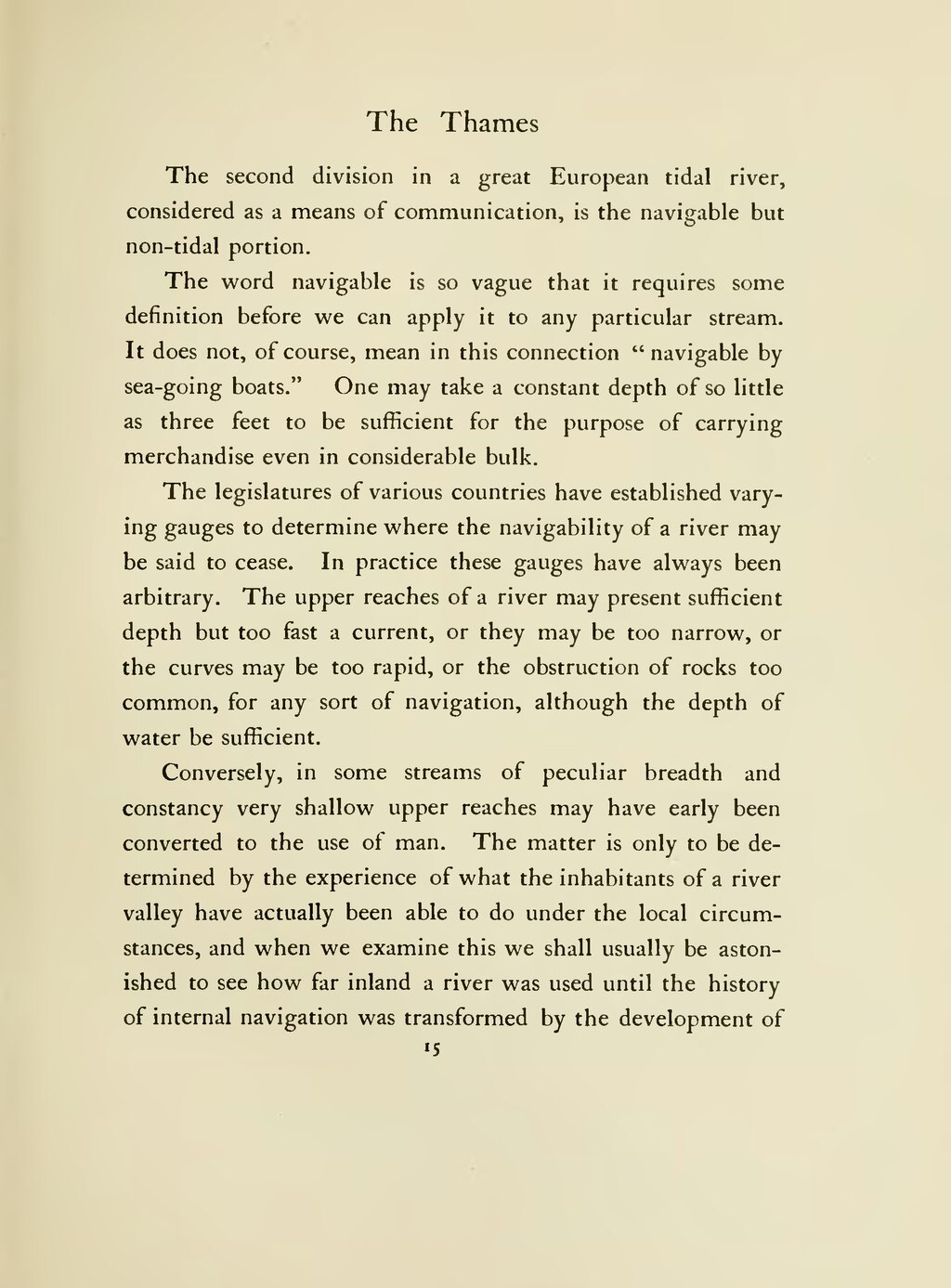The second division in a great European tidal river, considered as a means of communication, is the navigable but non-tidal portion.
The word navigable is so vague that it requires some definition before we can apply it to any particular stream. It does not, of course, mean in this connection "navigable by sea-going boats." One may take a constant depth of so little as three feet to be sufficient for the purpose of carrying merchandise even in considerable bulk.
The legislatures of various countries have established varying gauges to determine where the navigability of a river may be said to cease. In practice these gauges have always been arbitrary. The upper reaches of a river may present sufficient depth but too fast a current, or they may be too narrow, or the curves may be too rapid, or the obstruction of rocks too common, for any sort of navigation, although the depth of water be sufficient.
Conversely, in some streams of peculiar breadth and constancy very shallow upper reaches may have early been converted to the use of man. The matter is only to be determined by the experience of what the inhabitants of a river valley have actually been able to do under the local circumstances, and when we examine this we shall usually be astonished to see how far inland a river was used until the history of internal navigation was transformed by the development of
